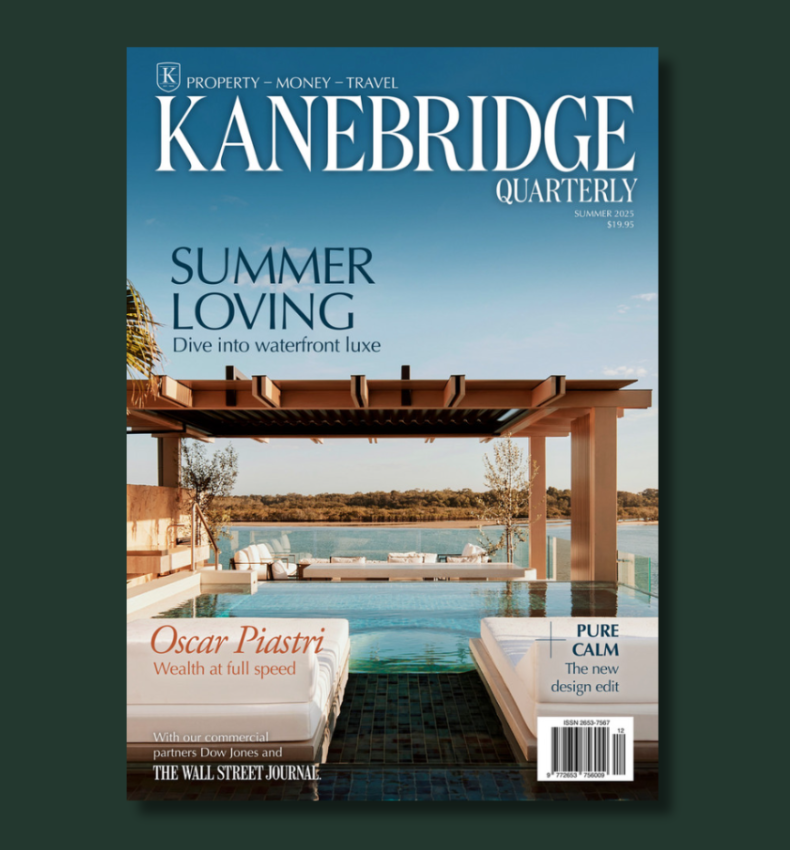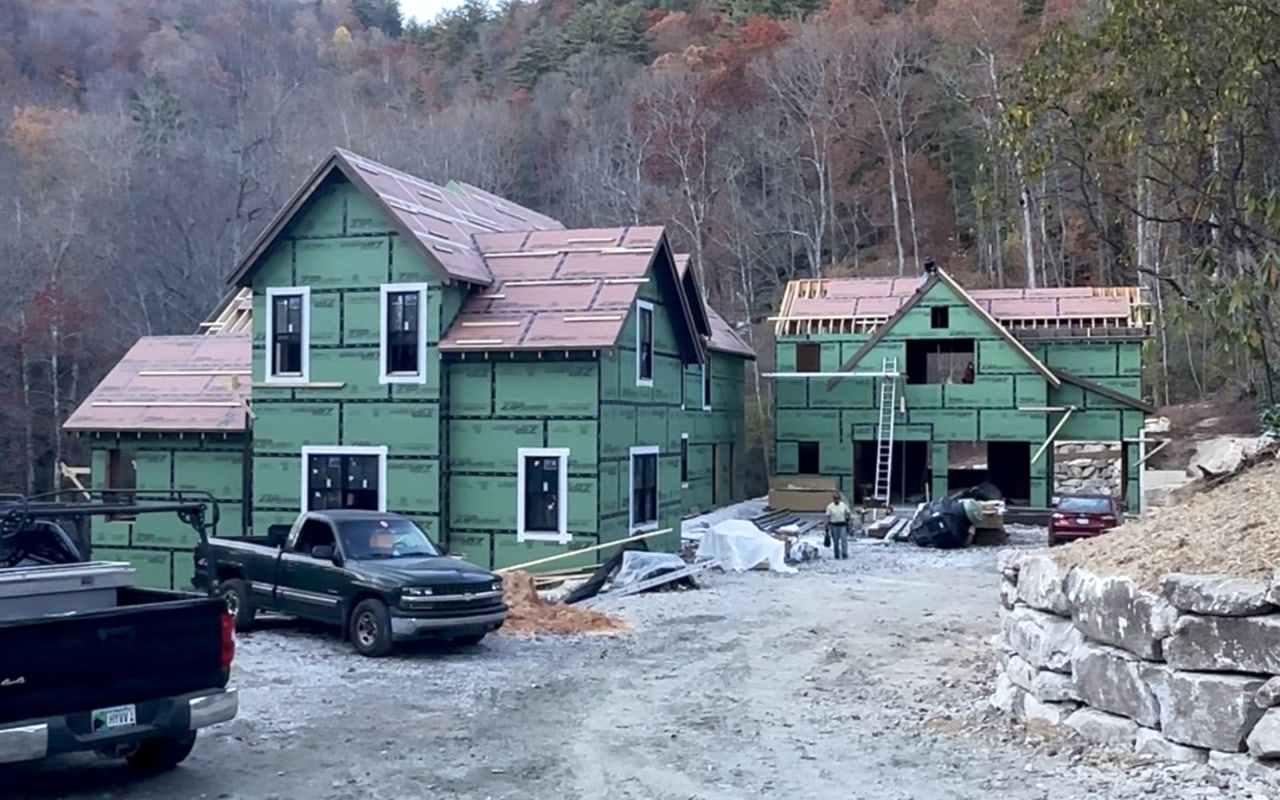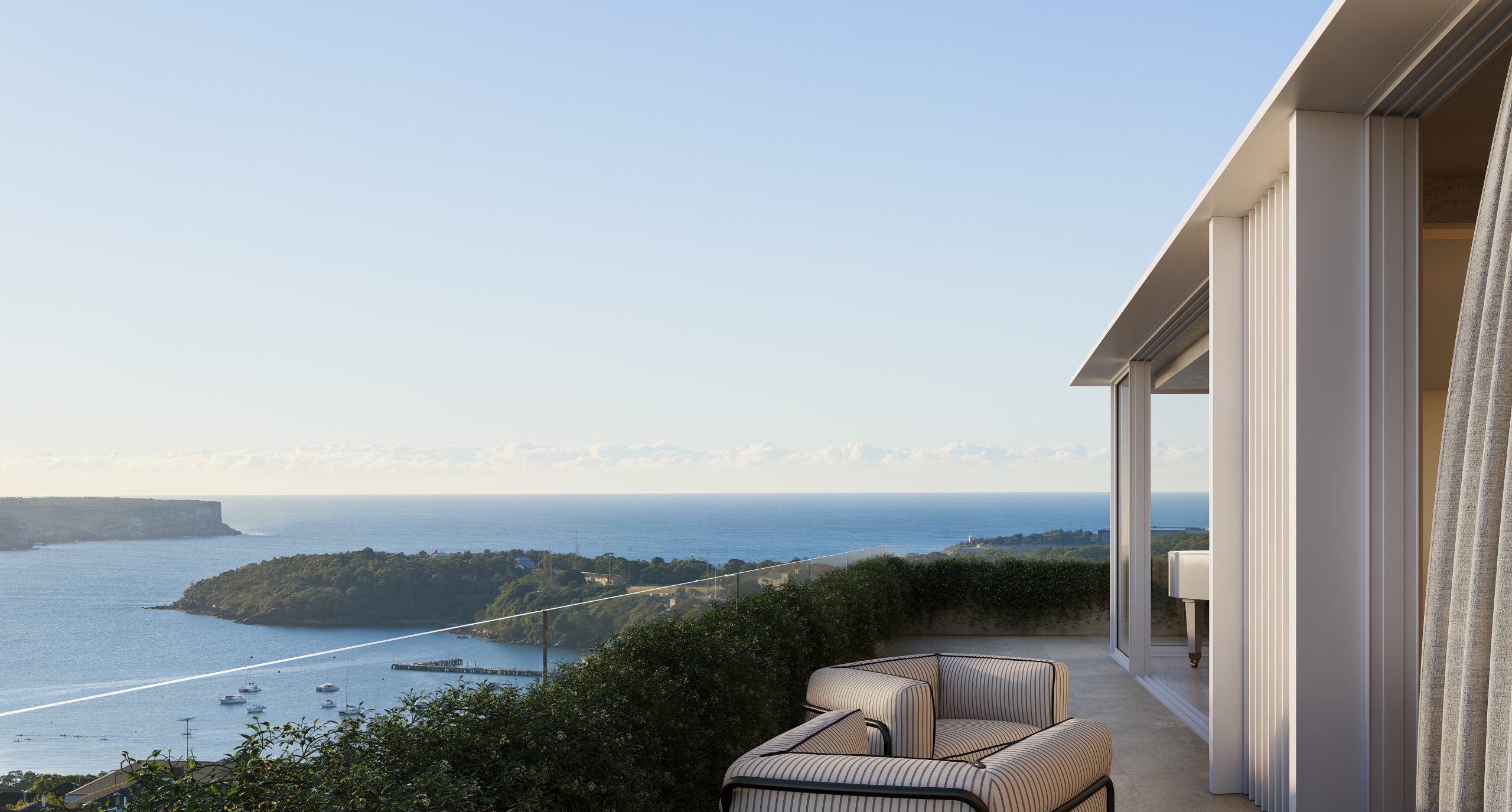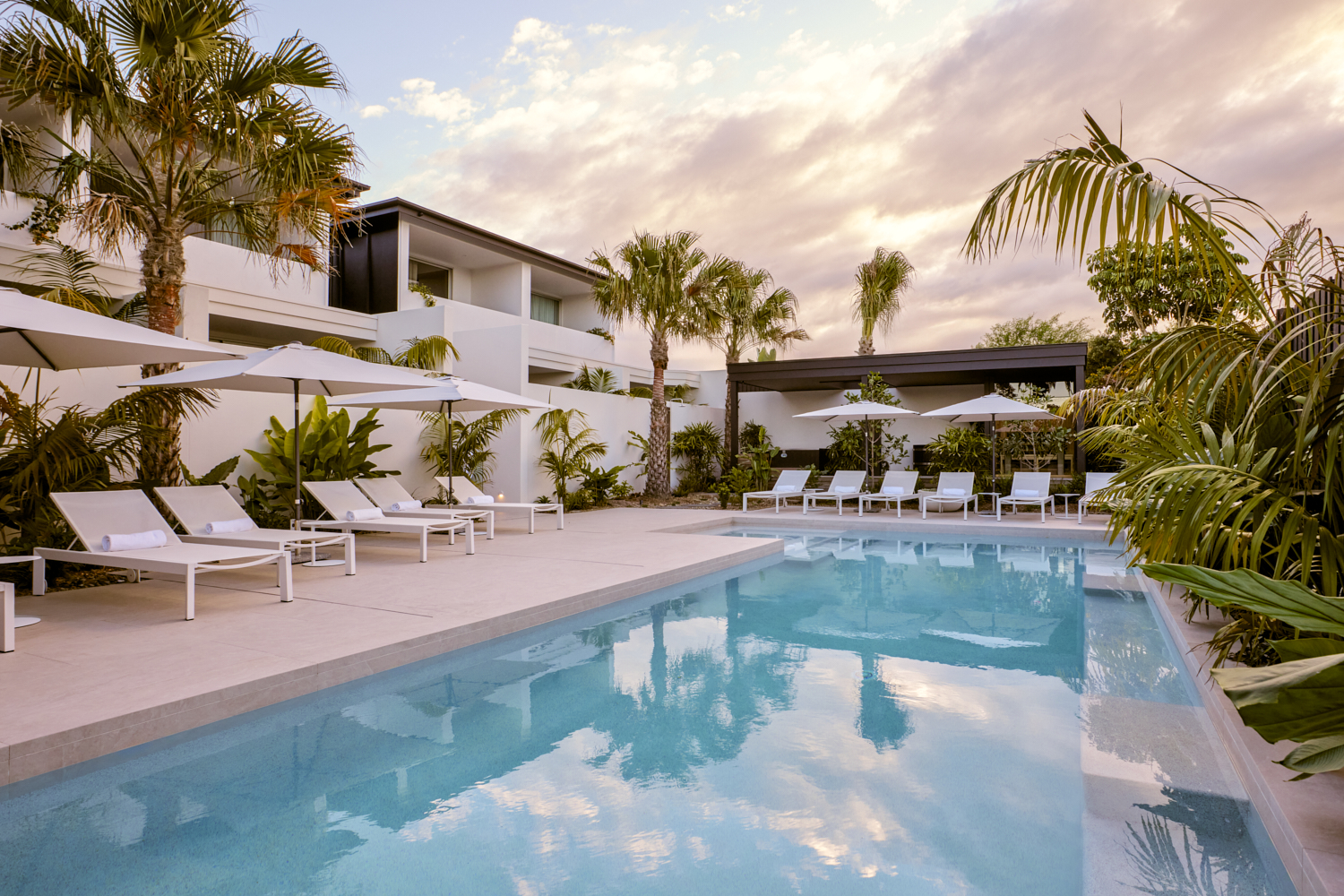NOOSA IGNITES WITH RECORD TROPHY HOMES
Once a sleepy surf town, Noosa has become Australia’s prestige property hotspot, where multi-million dollar knockdowns, architectural showpieces and record-setting sales are the new normal.
It wasn’t too long ago that Noosa was seen as a relaxed holiday town, more famous for its surf breaks and weekenders than record-breaking prestige property.
But much like much of Queensland, COVID lit a torch under the market, and in Noosa it was the prestige sector that surged the hardest.
Records tumbled, including one-bedroom apartments on Hastings Street, the suburb’s only true beachfront strip, changing hands for nearly $6 million. That’s a price point not seen anywhere else in Australia, not even Bondi Beach.
While some regional markets have since cooled as workers trudged back to the office, Australia’s wealthy have continued to pour into Noosa.
Their growing fortunes, from corporate payouts to generational wealth, have fuelled the demand. Think former Virgin Australia CEO Jayne Hrdlicka, who just received a $50 million payout from her former employer.
Just before Christmas last year she spent $17 million on a 1970s Noosa home, which she plans to knockdown and replace with a three-level luxury residence by Shaun Lockyer Architects.
The regional price record was set in 2021 when Peter Tighe, non-executive chairman of AuKing Mining and part-owner of champion mare Winx, paid $34 million for Webb House in Sunshine Beach.
Initially, speculation swirled that billionaire Gina Rinehart was the mystery buyer. Sunshine Beach still holds the crown for Noosa’s priciest sale, but the bulk of big-ticket transactions are now spread between absolute beachfront in Noosa Heads and the suburb’s sought-after waterways.
So far in 2025, there have been 42 sales above $5 million across the region. That’s broadly in line with the last three years, with the exception of 2021, when more than 90 properties over $5 million changed hands between January and September alone.
Higher interest rates aren’t applicable to this cohort of buyers.
This year Mark Fraser, the Queensland architect who founded beach shade giant CoolCabanas, paid $18 million on an empty X sqm block of land with approved plans for a new luxury home.
Brendan Pickering, the managing director of Pickerings Auto Group, spent $16.5 million to add to his collection of Noosa waterfront trophy homes, while the lesser known, Melbourne-based millionaires Robert and Abigail Polites, emerged as buyers of a $17.6 million home on Witta Circle, widely regarded as Noosa’s premier riverfront street.
The prestige market has been further energised with the listing of one of Noosa’s most striking waterfront homes, and it could set a new benchmark.
Reed & Co. agents Adrian Reed and Donna Taylor have just launched Casa Luca to market, a newly built Wyuna Drive home that recently won the 2025 Master Builders Regional Award.
Translating to “House of Light,” the home has been crafted by renowned designer Paul Clout, whose name is synonymous with Noosa’s most celebrated residences. Interiors are by Hong Henwood, incorporating Italian marble, Portuguese stone, Egyptian limestone, and hand-blown Soktas glass pendants.
Every detail has been carefully curated, and all the custom furnishings are included in the sale.
The residence offers a 20-metre river frontage with expansive glass panes framing uninterrupted water views. Inside, curved walls and soaring ceilings deliver dramatic impact, while a marble-clad galley kitchen with a 3.5-metre island bench forms the heart of the home.
It features a Gaggenau cooktop and ovens, dual integrated Fisher & Paykel fridges, and Miele dishwashers, a space designed to entertain as much as cook.
Spread across more than 500 sqm of internal living, the four king-sized bedrooms include a master retreat with a private riverfront terrace, walk-in robe, and ensuite clad in limestone and Italian marble.
Multiple lounge areas are anchored by Jetmaster and gas fireplaces, with terraces flowing to the pool, spa, and private jetty. A custom wine cellar and bar sit alongside the dining space, while an alfresco pavilion with an automated roof, BeefEater barbecue, plumbed gas fire pit, floating daybed, and magnesium pool complete the resort-style setting.
Competing for best trophy home listing this summer is another Paul Clout special, this one on Gympie Terrace in Noosaville. The home, dubbed One W, is listed with Century 21 Conolly Hay Group Noosa Heads agent Rachel Sellman, who is entertaining offers around the $20 million mark.
The highlight of the four-bedroom, three-level home is the rooftop terrace, channeling a chic Mediterranean beach club with a private heated pool and spa, floating daybeds, custom dining and lounging areas with a gas fireplace, a built-in barbecue, a bar with beer taps, and an adjustable pergola. Sharing this level is a fitness studio with a full gym, infrared sauna, and a steam shower.
From gorilla encounters in Uganda to a reimagined Okavango retreat, Abercrombie & Kent elevates its African journeys with two spectacular lodge transformations.
The PG rating has become the king of the box office. The entertainment business now relies on kids dragging their parents to theatres.
The developer’s award-winning rise continues with two new coastal landmarks redefining prestige design and delivery.
Mosaic Property Group is pushing Queensland’s prestige market into a new era, leveraging design excellence, construction certainty and a fully integrated operating model to deliver some of the most sought-after residences on the coast.
With its flagship Florence by Mosaic capturing the Urban Development Institute of Australia’s Queensland Project of the Year, and two new coastal projects, Madeline in Broadbeach and Josephine in Burleigh Heads, surpassing early sales expectations, Mosaic has cemented itself as one of the nation’s most consistent and compelling luxury developers.
For Mosaic, luxury isn’t about embellishment. It’s about precision—architectural, experiential and operational.
That philosophy has driven rapid evolution into the top tier of residential development, redefining how high-end buyers think about design, craftsmanship and developer reliability. As the market becomes increasingly selective, Mosaic’s approach has struck a powerful chord.

Florence: The Project That Rewrote Expectations
Florence by Mosaic marked a turning point for the company. Receiving the 2025 UDIA QLD Project of the Year and being recognised as Australia’s best mid-rise development at The Urban Developer Awards affirmed what industry insiders had already observed: Mosaic’s end-to-end business model is delivering residential outcomes of rare consistency and quality.
The project showcased the group’s signature methodology, from meticulous site selection and architecture-led planning to in-house construction and client care that continues long after settlement.

Madeline: Broadbeach Refined for A New Generation of Luxury Buyers
Madeline by Mosaic represents a confident expression of contemporary seaside prestige. Comprising a boutique collection of half-floor and full-floor residences, the project has been designed to maximise protected views of Broadbeach’s coastline—an increasingly rare commodity in the city’s accelerating development environment.
Each residence is shaped around privacy, spatial generosity and a seamless interplay between indoors and out. Interiors adopt a restrained, timeless material palette that favours longevity over decorative flourish, with bespoke detailing that signals the shift toward quiet luxury now dominating the upper end of the market.
The response has been emphatic. Madeline is approaching 90 percent sell-out within months, reflecting both deep demand for premium coastal residences and strong confidence in Mosaic’s delivery capabilities.
For buyers seeking security in a volatile market, Mosaic’s track record and disciplined processes have become a significant point of differentiation.

Josephine: A Boutique Icon for Burleigh Heads
On the iconic Burleigh Heads Esplanade, Josephine by Mosaic takes a more intimate approach to prestige living.
Its limited collection of half-floor and full-floor residences places exclusivity at the centre of the experience, with uninterrupted ocean views on the very prestigious Burleigh Heads beachfront, and architecture that embraces the raw beauty of the coastline.
Josephine’s early release was met with intense buyer interest, resulting in sales exceeding 50 per cent within weeks.
This momentum reflects the broader shift among affluent purchasers toward boutique coastal buildings that deliver privacy, permanence and a strong sense of place—qualities that Josephine captures with clarity.
Mosaic’s founder and Managing Director, Brook Monahan, encapsulates the project ethos simply: “Josephine is the antithesis of the high-rise tower. It’s intimate, personal, highly considered and deeply connected to its coastal setting.”
The Power of an Integrated Model
Much of Mosaic’s success in the luxury segment stems from its atypical business structure.
While many developers outsource design, construction and even customer service, Mosaic retains full control of every component—from research and site acquisition to architecture, building and post-completion care.
This end-to-end model compresses risk, eliminates handoff errors and ensures accountability at every stage.
For high-net-worth purchasers, that reliability is invaluable. In a prestige market shaped increasingly by uncertainty, the assurance that a project will be delivered exactly as promised has become a decisive factor.
Mosaic complements this with a research-led approach to site selection, targeting high-demand lifestyle destinations with enduring capital growth prospects.
This discipline has created a consistent portfolio of developments aligned with long-term value creation, not short-term speculation.

A Design Philosophy Built to Last
Across Florence, Madeline and Josephine, Mosaic’s design principles remain constant: scale rooms for real life, not marketing imagery; choose natural finishes that age with beauty; prioritise privacy, acoustic performance and engineering excellence; and orientate homes to capture light, views and a strong emotional connection to place.
This is luxury as functionality—not spectacle. Mosaic’s homes feel composed rather than crowded, timeless rather than trendy. As Monahan puts it, “Our ambition is simple: to create homes that feel as exceptional in 20 years as they do on day one.”
A Brand Built on Trust
In the luxury sector, reputation is everything. Mosaic’s rapid absorption rates at Madeline and Josephine are less about hype and more about the trust it has earned. Buyers recognise the brand not just for design, but for delivery discipline and transparency—qualities often promised but rarely upheld.
Projects are documented, audited and communicated with unusual clarity, and Mosaic’s client-care program continues long after completion. This culture of accountability has become one of its most valuable brand assets.
A New Standard for Prestige Living
Florence set the tone. Madeline and Josephine extend it. Together, these projects illustrate an evolution that is reshaping Queensland’s prestige residential market.
Mosaic isn’t simply building luxury residences—it is redefining what luxury means. With its integrated model, design-led philosophy and award-winning execution, the developer has established a new benchmark for premium living in Australia’s fastest-growing coastal region.
This is the Mosaic standard: prestige, delivered.
Ophora Tallawong has launched its final release of quality apartments priced under $700,000.
When the Writers Festival was called off and the skies refused to clear, one weekend away turned into a rare lesson in slowing down, ice baths included.
























